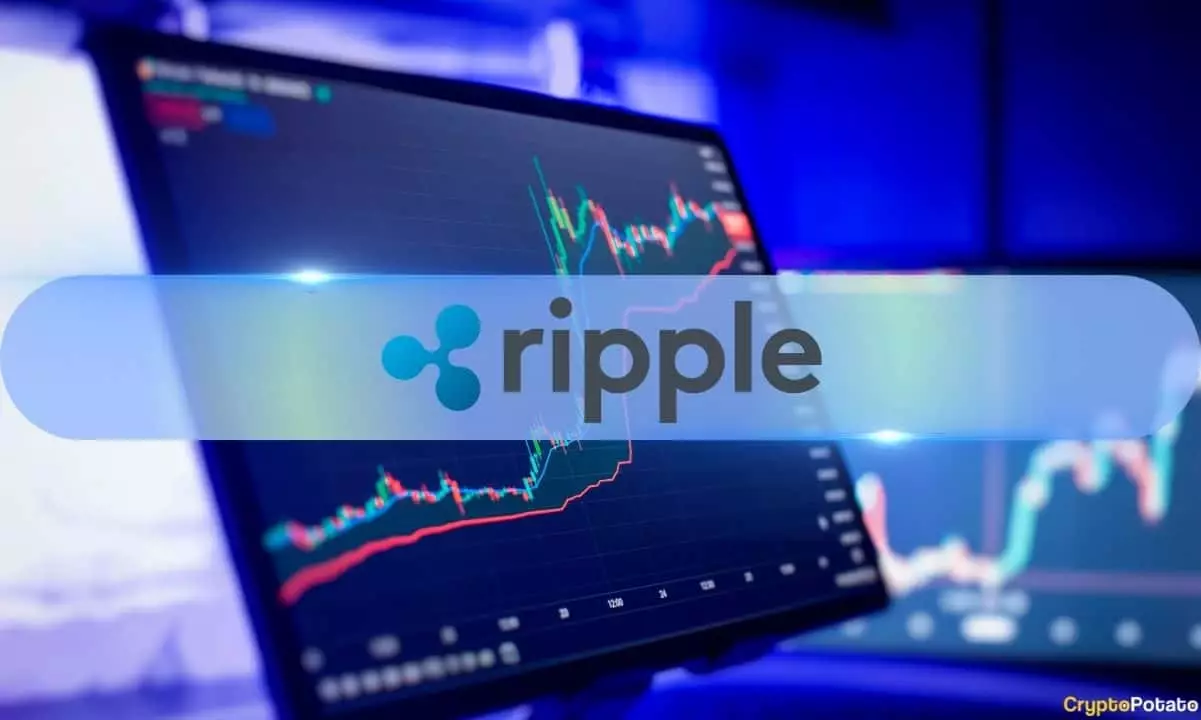XRP’s ascent in the cryptocurrency space is not just another blip on the radar; it represents a seismic shift in how digital assets are perceived and regulated, especially in the United States. The token’s recent victory over the U.S. Securities and Exchange Commission (SEC) marks a significant moment that transcends mere legal jargon—it has real implications for the digital economy. Ripple CEO Brad Garlinghouse has made it clear: the SEC’s withdrawal of its appeal after years of prolonged legal skirmishing is a game-changer for XRP. Prior to this development, Ripple faced a crippling $125 million fine; now, that figure has plummeted to a more manageable $50 million, effectively clearing obstacles for new institutional investment.
This legal vindication cancels out a narrative that has been toxic for much of the past few years—one that painted cryptocurrencies as overly speculative and legally ambiguous. It is a testament to the potential of digital currencies when a regulatory body essentially concedes the battlefield; it validates XRP’s role as a legitimate player in the financial ecosystem. As the norm shifts—away from restrictive policies and towards possible integration—cryptocurrencies may soon find a more welcoming legislative environment.
An Unprecedented Price Surge Amid Market Turbulence
In an environment where other major cryptocurrencies falter, XRP’s performance stands out remarkably. The early months of 2025 brought a staggering 50% price rally, allowing XRP to briefly flirt with the $3.40 mark, a level unseen since 2018. This is emblematic of an asset that is beginning to carve a niche for itself, bolstered by a legal foundation that now supports its valuation. While competitors like Bitcoin and Ethereum grapple with declines and stagnation, XRP’s gains represent a powerful counter-narrative.
Yet, one must tread cautiously; currently priced at $2.12—a 6.5% dip over just a week—XRP still appears as a volatile asset in a chaotic market. Even so, a 295% surge year-over-year starkly eclipses Bitcoin’s modest 47.2% rise and Ethereum’s troubling 43.1% plummet. This raises questions: are institutional investors finally recognizing the potential in XRP, or are they merely chasing the newest high? The truth likely dances somewhere in between, highlighting both potential and peril.
The Swing Towards Institutional Adoption
The institutional tide is visibly shifting. Ripple’s audacious $1.25 billion acquisition of Hidden Road signifies a new chapter for XRP, embedding it into traditional financial systems. The strategic use of RLUSD, Ripple’s U.S. dollar-backed stablecoin, as collateral for Hidden Road’s post-trade workflows represents an essential leap forward. The layering of blockchain into conventional financial infrastructure beckons an era of greater interoperability—a promising development that can foster broader adoption of crypto assets.
As legacy financial institutions slowly open their doors to cryptocurrencies, the moves made by investment firms and regulators are eerily telling. Franklin Templeton is preparing to launch a U.S.-based spot XRP ETF, while the CME Group has announced XRP futures. The sentiment is palpable: Wall Street is ready to engage.
Meanwhile, Latin America seems keen to capitalize on this adoption wave, exemplified by Brazil’s Comissão de Valores Mobiliários approving an XRP ETF. This burgeoning interest not only outlines an expanding market but also underscores the urgency for other players to catch up.
On-Chain Activity and Emerging Challenges
However, not all indicators glow positively; the numbers paint a more complex picture. On-chain activity on the XRP Ledger (XRPL) has not mirrored the gains seen elsewhere, revealing a troubling 37% decline in transactions alongside a 40% plunge in new wallet creations compared to the previous quarter. This stagnation raises eyebrows; are the increased institutional investments inflating a bubble that may soon pop, or is it merely a reflection of a broader market recalibrating itself?
Market performance, price action, and institutional interest cannot be viewed in isolation. They must be contextualized with on-chain metrics and user engagement to form a comprehensive analysis. As institutional giants approach XRP with open arms, it becomes essential to interrogate whether these developments are sustainable or indicative of a fleeting moment in a notoriously fickle market.
In an industry as volatile as cryptocurrencies, where fortunes can shift in an instant, XRP commands attention not merely as a digital asset, but as a bellwether that may very well influence the trajectory of its peers. While the stakes are high, the potential for transformative change looms larger than ever.















